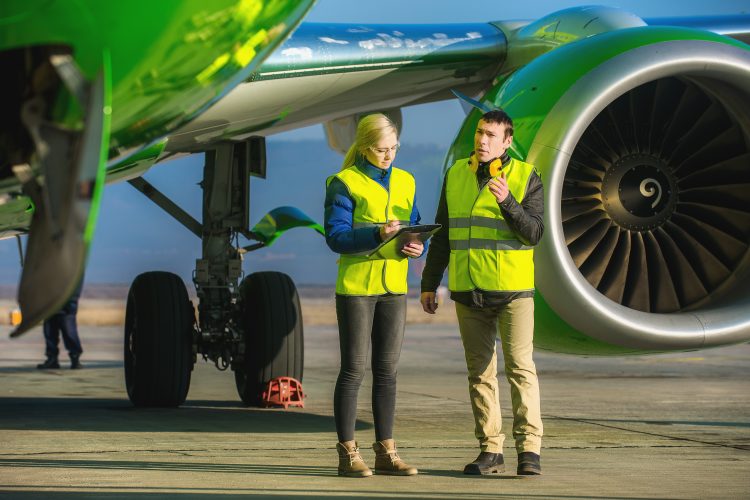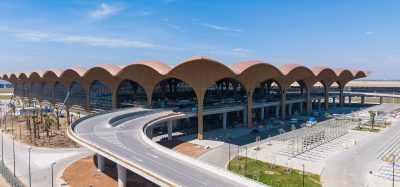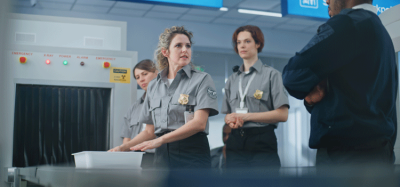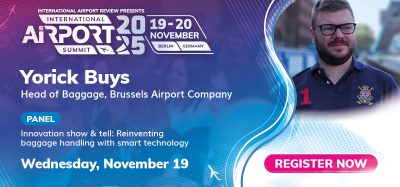The evolution of the airport workforce: Turning challenges into opportunities
Posted: 15 March 2023 | | No comments yet
Libor Kurzweil, Director Quality, Safety and Processes Management at Prague Airport, tells International Airport Review about the work done by an ACI World Taskforce on the future of the aviation workforce, outlining some recommendations for airports.


The year 2022 in civil aviation was framed by major events. It was affected by a relatively rapid increase in traffic after the COVID-19 pandemic pause and was also heavily affected by the war in Ukraine. However, the number one topic that affected aviation around the world had been staff shortages.
It was May 2022 and a major event was held in Istanbul. For the first time in history, the ACI World Safety and Technical Standing Committee met with the ACI Europe Technical, Operations and Safety Committee. Airport experts from all continents gathered at a joint conference table. The lack of staff phenomenon was already known at the time, thus an entire working session was dedicated to it. I took the opportunity for a small poll and asked the airport representatives present to raise their hand if their airport had enough staff in place for the approaching summer season. The result was not surprising. The boards represent roughly 200 airports overall, and only two members raised their hands. This confirmed the assumption, that staff shortages were a global issue, and it was right to address them.
For the same reason, a dedicated Taskforce was established and launched by the ACI World. It was aimed to write a new whitepaper on ‘The Evolution of the Airport Workforce’ and through it to improve the situation with the airport workforce in the medium- and long-term. Experts from the industry from all around the world were invited to participate and share their views and ideas. The working atmosphere was fantastic and everyone could feel an interest of people in doing something useful for aviation. It turned out that aviation could join forces when it was needed and pull together.
Join us live: Shaping the Next Generation of Hold Baggage and Air Cargo Screening
Join us live for an insightful webinar on 11th December at 14:00 GMT, in collaboration with Smiths Detection, as we explore the strategic balance of operational efficiency, regulatory compliance, and sustainability in high-volume security environments.
This session offers a focused look into future-proofing your security strategy.
Key learning points
- Cost Reduction: Strategies to minimize bag travel time while simultaneously reducing operational costs.
- Regulatory Roadmap: Insights into the next wave of regulatory changes and their impact on future investment decisions.
- Sustainable Systems: Practical approaches to building sustainability into security systems and lowering the total cost of ownership (TCO).
- Scalable Solutions: Real-world examples of scalable systems supporting current airport growth and preparing for tomorrow.
Register now for expert insights, case studies, and actionable strategies on operational efficiency!
Understanding the situation
The first objective of the Taskforce in which I had the opportunity to act as a rapporteur was to understand and briefly describe the reasons why aviation was facing a shortage of people. Some of the reasons were obvious. Before the pandemic, the airport sector was widely regarded as a strong, stable and secure employer, and that perception literally turned 180° overnight.
The sector was among the most affected and it was necessary to take extreme and unpleasant measures, including the layoffs of employees. Today, we sometimes hear voices that it was wrong decision and that it was better to keep all employees on board so that they are not missed now. At the time, however, no one knew how long the crisis would last without operations, and the measures were necessary for the aviation organisations to survive at all.
All the factors and so called “megatrends”, that the Taskforce identified are presented on the following picture.


Pic. 1: Mega trends and other factors influencing the workforce. Credit: ACI World
Difficulty to win back employees is given by three aspects. First, as already mentioned, people still do not fully trust in the stability of aviation employers. They will need at least two good traffic seasons to forget all the pains of the COVID-19 crisis and then, the confidence will be regained.
Second, aviation is not alone in the labour market. Nowadays, there are many other sectors attractive enough for technically oriented jobseekers. Therefore, aviation must compete for the talented people with other sectors.
Third, aviation is slow in development, modernisation, and automation, and still depends on manual labour in some cases and the attractiveness of this manual work is generally decreasing. For example, Ground Handlers do lots of manual tasks without advanced automation. Moreover, they are exposed to the weather be that wind, rain, snow or heatwave. Another example is security, where the employees permanently interact with passengers. Here, there is an increase in the number of unruly passengers, and in extreme cases, cyberbullying. Passengers taking photos of employees’ ID cards, searching for their identity on social networks and attacking them cause stress and the loss of existing employees, and therefore a reduced interest of candidates for these positions.
Working at airports is generally accompanied by requirements for background checks, which mean that a novice employee is unusable for the company for quite a long initial time. We have therefore devoted a great deal of time to the background checks in the ACI Taskforce, looking for ideas on how to improve the situation.
The working group has continued to discuss interesting phenomena of today. These undoubtedly include meeting different generations in the workplace. We have described Generation X, Millennials and Generation Z and their expectations. The young generation coming up is characterised by a willingness to quickly change disciplines and employers and try new things. Aviation probably cannot rely anymore on the traditional loyalty of employees who have worked in aviation all their lives and often their entire families worked there. Aviation has always benefited from the fact that people were anchored here with their whole hearts. The enthusiasm for aviation will certainly remain there into the future, but the number of enthusiasts may not be as high and may not be enough. The reason for this is, that many fields other than aviation are now available for young people with an interest in technology, such as automotive, IT, virtual reality, artificial intelligence, robotics and many others. Aviation must therefore fight for skilled and talented people with other sectors.


Credit: ACI World
Another theme discussed was the hybrid style of work. It was remote working that helped organisations keep essential elements of their activities going during the pandemic. Nowadays, remote working is often presented as a benefit that can make a positive contribution to both organisations and employees. It is actively sought after by young candidates in interviews and airports should bear this in mind to remain competitive in the labour market. Obviously, not every working position can be done from home, and at airports the number of positions that need the physical presence of employees is relatively high. Amongst them are also those, that miss the candidates the most: ground handling, security, and the fire brigade.
Young job seekers also become more and more interested in the environmental and social responsibility of the employers and of the entire aviation sector. This brings to mind all sustainability initiatives and reminds us, that sustainability is much more than just the decarbonisation for the protection of environment. In the context of this article, it is crucial for attracting the young generation of job seekers. And in the widest context, for keeping our so-called “license to operate”.
Recommendations for airport operators and for states
The second task of the working group was to formulate recommendations on what airports can do to improve. Innovation, modern technology, automation, and the new types of jobs associated with these ideas, with manual jobs being reduced or lost is a scenario. In the document, we propose that each organisation should assess for itself what structure of jobs it has now, what it will need in the medium-term and how to fulfil it – i.e. what current professions to retrain for the future, where it will be possible and where not, how to provide new workers. The whitepaper also offers suggestions and examples of activities to retain employees.
Recommendations have also been proposed for states and these aim in particular at speeding up the background checks, which is a competitive disadvantage of civil aviation against other fields. It must be maintained, but in a more efficient way. The professionalisation of some jobs or recognition of reliability verifications between regions or states is also proposed.
The list of key recommendations is as follows:
Accelerate the introduction of technology and redefine the role of humans
- Airports and aviation stakeholders should commit to the introduction of automation and technological innovation, while rethinking the role of human workers.
- Airports should embrace technology designed to serve humans, and humans should remain at the centre of technology’s development, operations, and maintenance.
- Airports should anticipate the evolution of their staff’s roles and the redesigning of jobs, as different skills and knowledge will be needed to work with technology.
- Private sector and governments need to further invest in research and development to ensure the continued development of technology to support the digitalisation of the airport ecosystem.
Bring workers (back) to the airport
- Airports and airport ecosystem stakeholders should seek to enhance their “employer brand” and their competitiveness as an employer.
- Airports should examine creating a positive “employee experience” seeking to consider and address some of the challenges and difficulties employees face.
- Airports should promote value-based procurement practices to focus not just on cost but also on added value of contracted activities.
- Airports should seek to make difficult jobs easier or more comfortable by embracing solutions that can facilitate or support workers in their tasks.
- Airports should attract the future generation of workers and leaders into aviation by focusing on educational pathways and clear career trajectories.
Train, develop, retain, and nurture a sustainable workforce
- Airports and aviation stakeholders should invest in reskilling their workers to meet the needs of jobs redesigned to integrate future requirements and evolutions.
- Airports and the wider aviation industry should embrace career mobility across different sectors that can bring new ideas and creativity to the aviation industry.
- Airports should develop or sustain programmes aimed at supporting the mental health and wellbeing of employees.
- Airports should seek to develop a strong, diverse, agile, and mentally healthy workforce.
Case studies
In addition to recommendations, Taskforce members have provided many case studies from their airports on what activities they undertake to support recruitment and retention of staff and their wellbeing. One example is the Program Talent Management Pool of Prague Airport. Every year, managers of organisational units have a chance to nominate their younger employees that profile themselves as capable, skilled, and passionate about working in aviation and have the potential to become either managers or top professionals. Every round of the Talent Pool takes 15-months of intensive personal development that runs along the regular work of employees.
Through an initial series of assessments, participants get to know themselves, their character and profile, strengths, and weaknesses better, and learn to work on them by building soft skills. Participants are then given a unique chance to propose their own project to improve the airport or company, work on it during the Talent Program, present it directly to the top management and get the opportunity to implement it. Finally, the Talent Program gives an excellent opportunity for networking with other talented employees in the pool, as the program includes frequent meetings and events at the airport and offsite, participating in team games, adventures, informal making friendships, and interpersonal relations which they can widely use in the future.
More than 200 young talents have benefited from the program through its 14 years of existence. Some of them have already promoted to management positions or leading roles for important projects.


Pic. 2: Talent Management Pool of Prague Airport 2022. Credit: Prague Airport
Conclusion
The year 2022 has shown us, that civil aviation is an integral part of the human society. The black prophecies from the time of the pandemic, which proclaimed that travel would never return and almost everything would take place online, have not come true. All that was needed was to give people back their freedom to travel, and the passengers returned. This shows how strong the civil aviation is and that no one must worry about its future. This is true for not only passengers, but also for employees.
Aviation is on the crossroad of revolutionary changes, which are advanced air mobility, autonomous vehicles, and new propulsion technologies. This is the new aviation and a great challenge for us. We are very fortunate that our generation will be involved in the biggest changes in aviation over the last 50 years. We will have the opportunity to tackle great things and many of them already in 2023. This, in my opinion, is the greatest opportunity for attracting new employees into aviation, the most talented ones and the best of the best. We must take full advantage of this opportunity.
The whitepaper on Evolution of the airport Workforce is a free download on the ACI World store. Only the registration to the site is needed. Those of you interested in the topic of the workforce of the future at airports, do not hesitate to contact me if you have the points to discuss.
About the author


Libor Kurzweil (ředitel Řízení kvality, safety a procesů, Letiště Praha)Libor Kurzweil holds a Ph.D. in Airport Operations from the Czech Technical University Prague. He joined Prague Airport as an Airport Engineer in the Strategy, Capacity Planning and Development Department in 2003, in 2012, Libor assumed the role of Director of Quality, Safety and Processes Management, the Safety Manager. His main roles and responsibilities include safety management system, quality management and business process management. Libor currently serves as Vice-chair Technical, Operations and Safety Committee (TOSC) for ACI Europe, and European representative to the Safety and Technical Standing Committee (STSC) for ACI World.
Join our free webinar: Beyond silos: How ecosystem thinking elevates the airport experience
In today’s complex aviation landscape, airports are moving beyond siloed operations to embrace a new era of collaboration. This webinar focuses on how leading airports are using ecosystem thinking to adapt, personalize, and continuously improve every touchpoint, boosting both passenger satisfaction and non-aeronautical revenue.
Date: 13 Nov | Time: 10:00 GMT
REGISTER NOW TO SECURE YOUR SPOT
Can’t attend live? No worries – register to receive the recording post-event.


















